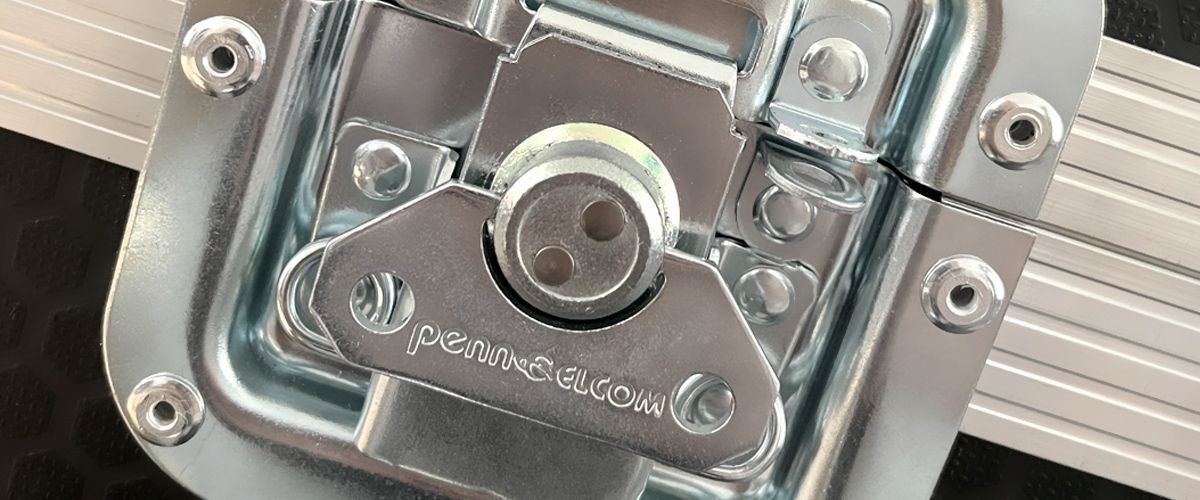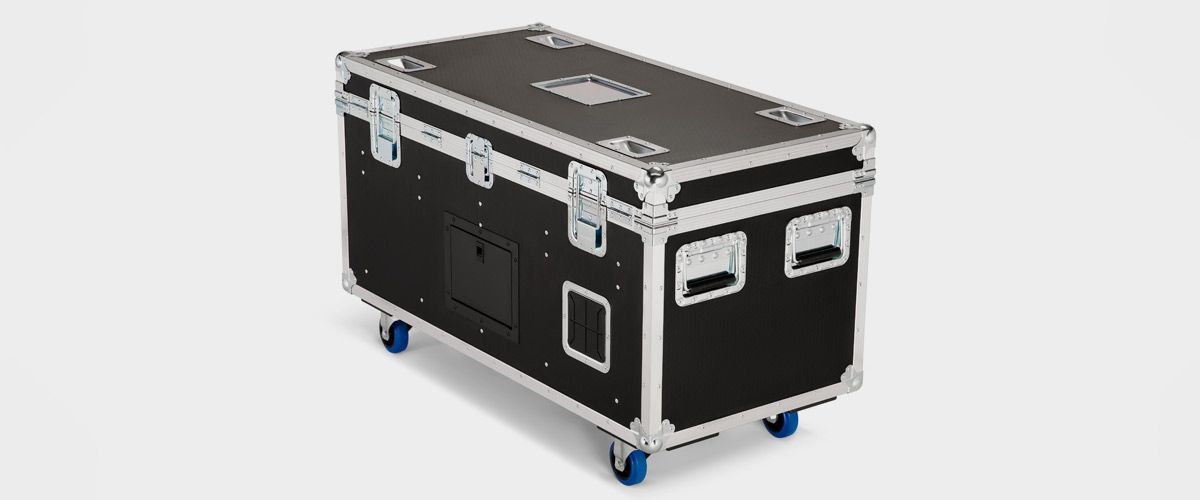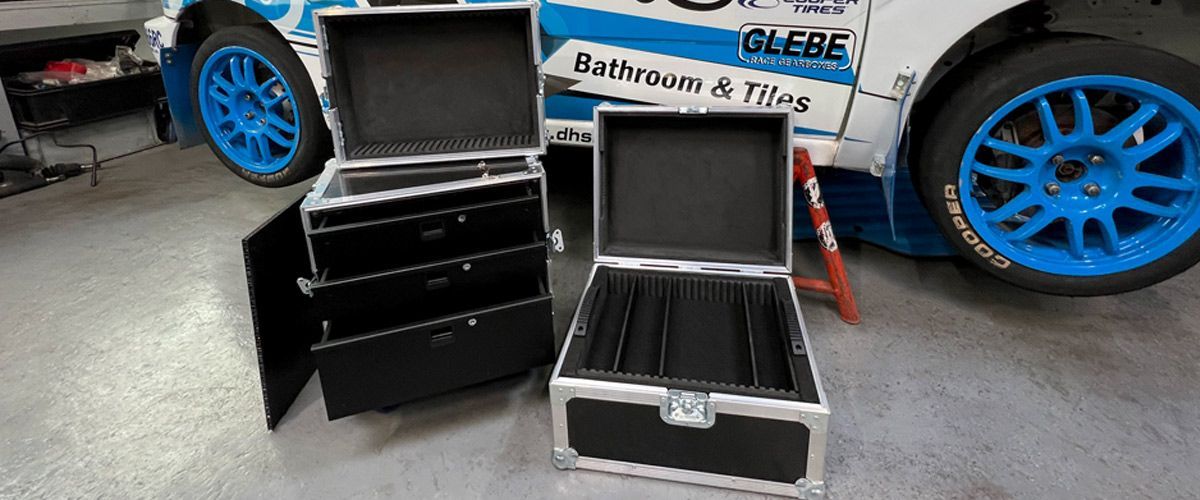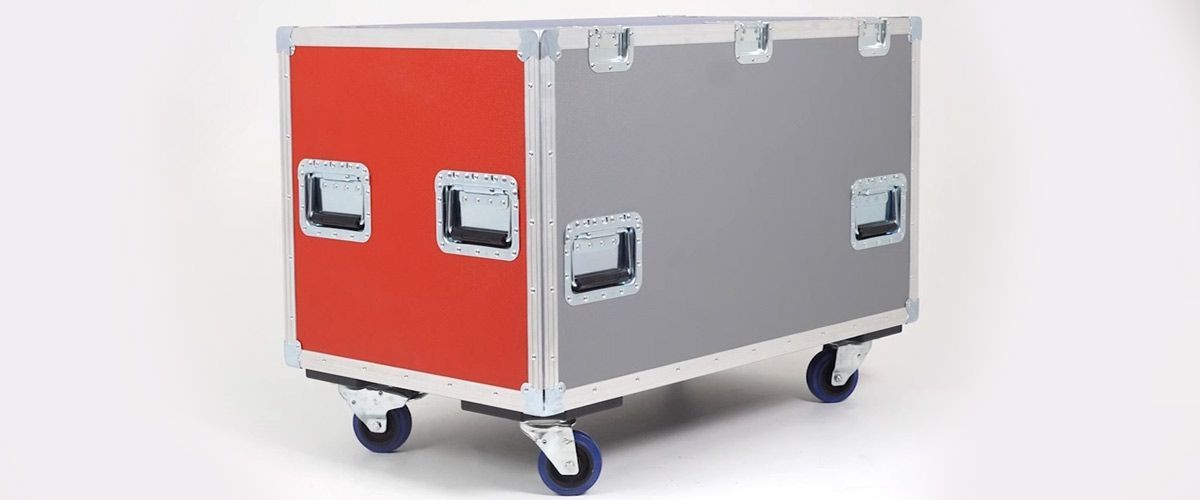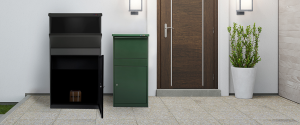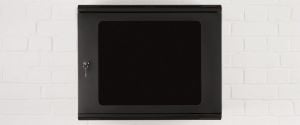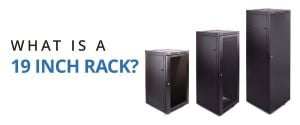The most popular flight case latches, also known as flight case catches, make accessing and safeguarding your equipment their number one job.
Trusted by those who work in AV, entertainment and even the military, flight cases are used for their ability to protect equipment, endure rough long-distance travel and work well as a long-term storage solution.
What makes a flight case latch stand out? And which one is right for you?
What are flight case latches?
Strong and durable, flight case latches need to withstand rough handling and conditions, all the while offering quick, tool-free access to save users’ time.
Case latches are resilient, highly functional over extended periods, and incredibly secure.
There is a latch to suit almost all cases, combining the best materials, integration, security, and size to suit most case builders. And they are easy to replace.
So, if you are struggling to decide what latch is for you, here is our overview of the most popular latches on the market:
Types of latches for your flight case
Recessed Latches
Recessed latches have proven to be some case builders’ most popular pick, coming in small, medium and large sizes.
Whether you choose a plain or offset dish, the recessed latch is a classic choice with its unassuming design, being so easy to use that it can be used one-handed in poor light conditions.
Installed within a flight case cutout, the latches' flushed, streamlined design protects the twist-locking mechanism from being knocked around or scraped. Their discreet design also helps their stackability and storage.
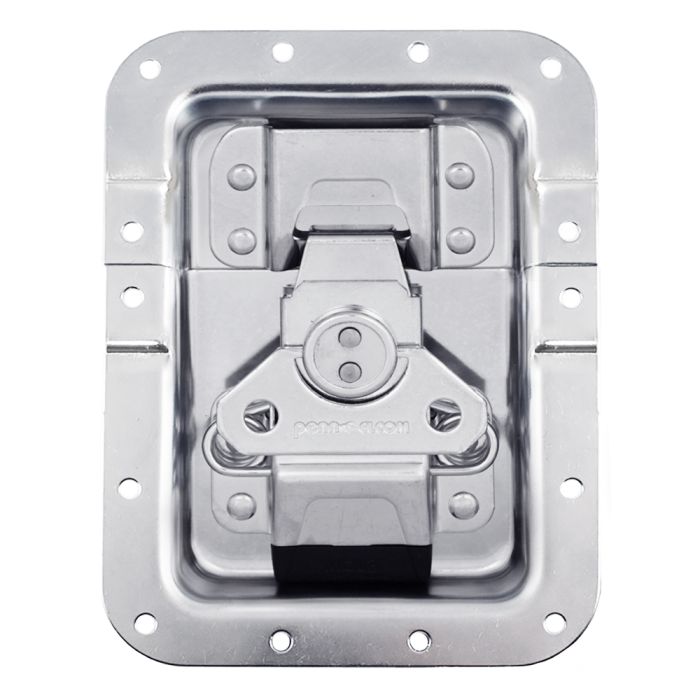

Over Latches
Designed so you do not have to cut into extrusion, Over Latches are the perfect choice for those looking to seal their flight case tightly without a dish fitted between the lid and case.
Many over latches use a similar recessed latch cantilever butterfly mechanism, except with a blade reaching to a separately installed catch plate. Some over latches also have built-in compression springs.
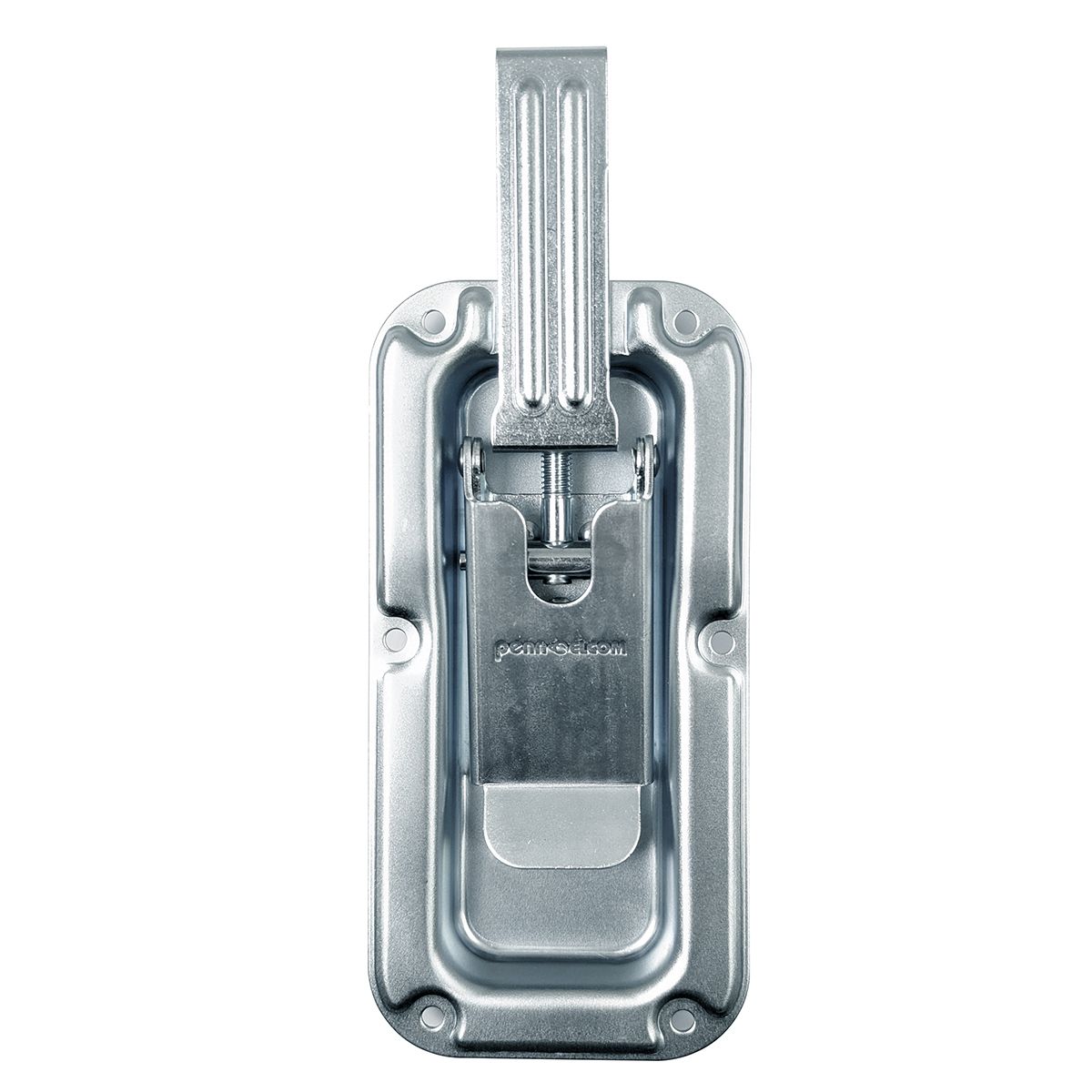

Surface Latches
Surface Latches are straightforward latches that can be simply mounted directly onto flight cases or crating boxes without heavy design adaptation.
Surface latches also offer different locking mechanisms, with many sprung or unsprung options.
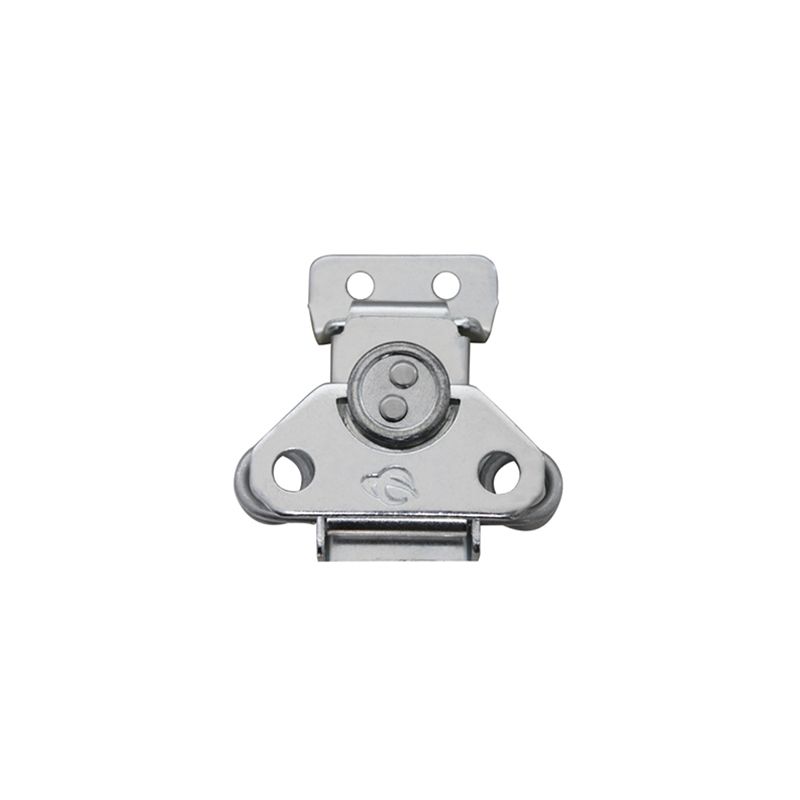

Rack Lid Latches
Compatible with 19 Inch Racking, Rack Lid Latches function as a dish, corner, brace, and rack rail all at once for 1U or 2U applications, dependent on the latch. These latches protect vital gear and give users access to 19 inch racking quickly.
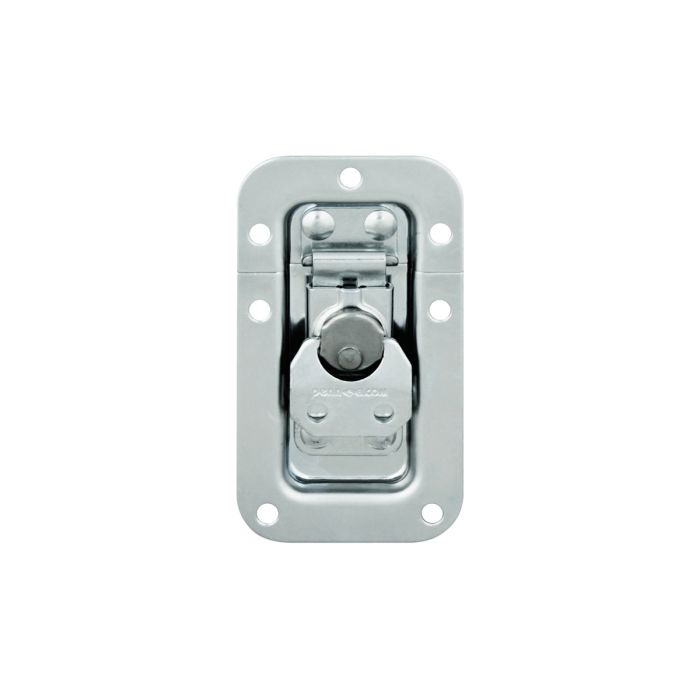

Draw Latches
Also known as a suitcase latch, Draw Latches operate by drawing together two components to create tension between the lid and body of your flight case.
The draw latch, or drawer bolt, is usually installed onto smaller cases for instruments or compact equipment, with many designed to be lockable.
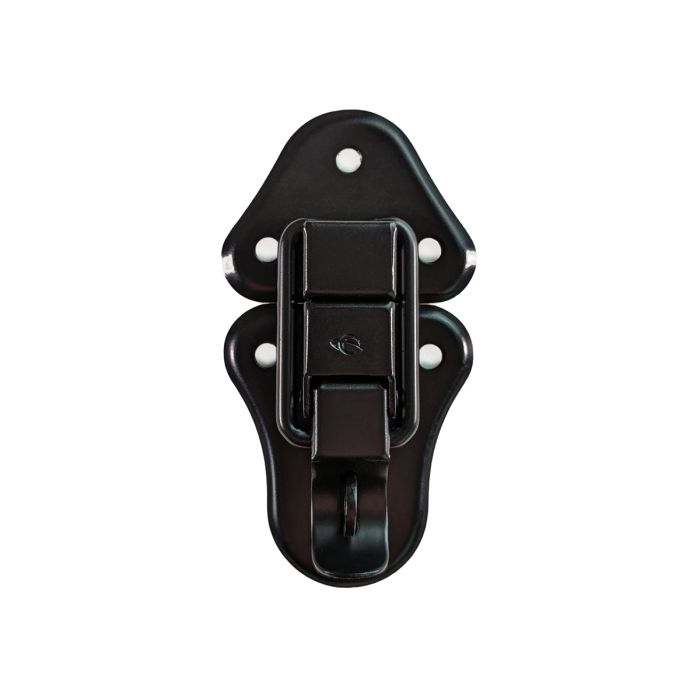

Slam Latches
User-friendly and rapid, Slam Latches gives users quick access to essential equipment, especially those involved in events and critical incidents.
A single pull will spring open your case, and a simple ‘slam’ will close it.
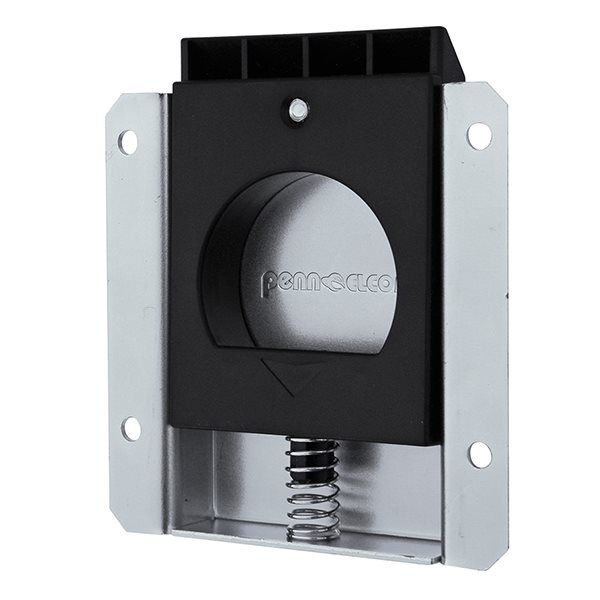

The flight case latch for you is dependent on what you need. Do you need the latch to be discreet? Do you need additional security?
Flight case latches are built to last but always remember:
- The purpose of your flight case – you need a latch suitable to what you are putting into your flight case, especially the size
- How it is being transported or stored – some latches can take wear and tear better than others
- How fast you need access – find your balance between security and convenience
- Your personal preferences – what type of finish, lockability, material and color you need
At Penn Elcom, we are the experts in flight case hardware. From case handles to castors, we can supply you with what you need to build your perfect flight case that will go the distance. Get in touch if you have any questions about the suitability of latches for your project

